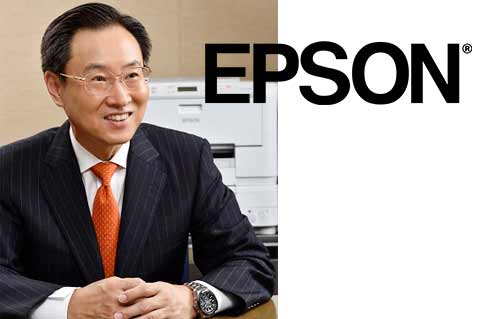February 13, 2017
Q/A: Epson Global President Minoru Usui
Epson America Inc. hosted its third annual Digital Couture Project Show to spotlight the benefits of using dye-sublimation printers for designing apparel. We spoke with Minoru Usui, president of Seiko Epson Corporation, to find out more about Epson’s entry into the fashion industry.

Q: How has the Epson Digital Couture Project been so far?
Minoru Usui: “It’s my first time here so it’s difficult to see the big picture, but it’s really great to see so many designers and people connected with the industry come together and talk about the industry in such depth. I actually have a bit of regret – New York Fashion Week begins in a few days and I wish I could be here for it so I could fully understand everything that’s going on in the industry at the moment.”
Q: You stated at the Tech Forum that you know more about technology than you do fashion. Why did you make the transition into unfamiliar territory?
MU: “Originally, I started as an engineer. I was responsible for developing the Micro Piezo technology in Epson’s printers. We used that technology to revolutionize the way people printed photos and text. It wasn’t just that, though. The technology has the potential to actually print any liquid on any kind of media. It wasn’t just water-based inks.
Around 2000, we started to think about textiles because the Robustelli company approached us and said let’s try and build up the digital printing industry together. Regular printing uses four screens or plates for paper, but once it gets to textile, it needs about 20 so it starts to get complex. That’s when I saw the potential for the digital inkjet printer. One really, really hard thing to overcome was developing the inks for each textile.
We were very lucky because we were working with those excellent Italian companies and that has enabled us to expand globally. For example, we have dye-sub printers for printing out sportswear. The great thing about digital is that by changing the ink you can change the application.”
Q: Why did Epson decide to collaborate with Philadelphia University for the event?
MU: “In addition to Philadelphia University, we’ve also worked with universities in Italy and Japan. What we think they bring to the table is their very deep knowledge of materials and they’ve helped us tremendously on the technical side. Of course, printing textile requires front-end processes, back-end processes and finishing. We’ve been able to use their expertise to help build up our products.”
Q: What do you see coming to the forefront in the next year or so with innovations in textile printing?
MU: “I’d like to start by saying what we’ve already achieved. We have a great lineup of products for this industry from very compact models with our partnership with Robustelli to large scale printers for production use. We’re capable of printing on almost every fabric there is. Where I’d like to take it from now is to work with designers and people in the fashion industry to have them understand what we can offer so we can build a community to work together to boost the digital printing industry for fashion.
For the end user, we now have an environment where they can customize products exactly suited to their needs. For the designers, they can see their creativity on fabric almost instantly at low cost. For the retailers, they can produce garments, very short run with very little waste. We have the whole environment coming together so we can completely disrupt the way this industry works.”

Product Hub
Find the latest in quality products, must-know trends and fresh ideas for upcoming end-buyer campaigns.
